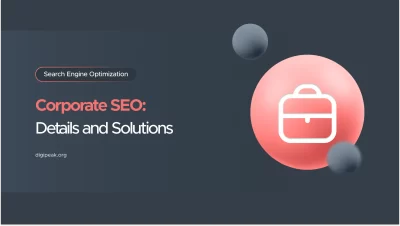
What is Corporate SEO ? Details and Solutions
Corporate SEO or Business SEO requires high responsibility, inter-team communication and planning. When SEOs perform …
SEO -
30/05/2024 -
3 dk okuma
Stay up to date with Peakers

Join Us So You Don't
Miss Out on Digital Marketing News!
Join the Digipeak Newsletter.
Related Posts

Corporate SEO or Business SEO requires high responsibility, inter-team communication and planning. When SEOs perform …

Do you find yourself having difficulties ranking higher in search engines? Below is the complete …

Surrounding the rapidly changing landscape of the digital point, one must always invest in the …

New and potential clients often ask us about the suitable time to update their SEO …